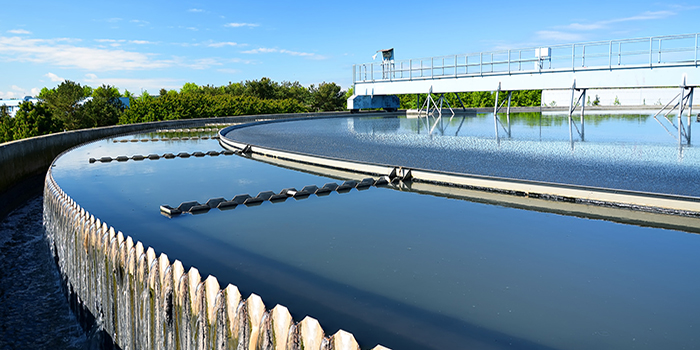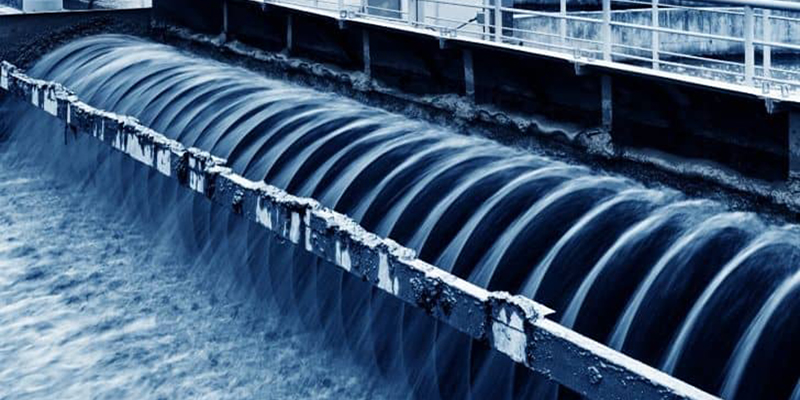Wastewater treatment is a process designed to remove contaminants and pollutants from water generated by human activities before it is released back into the environment or reused. The goal is to protect public health, prevent environmental pollution, and ensure the sustainable use of water resources. Here are the key steps and methods involved in wastewater treatment:
Preliminary Treatment
In this stage, large objects such as sticks, leaves, and other debris are screened out, and grit (sand, gravel) is settled. This step helps protect downstream equipment from damage and ensures the efficiency of subsequent treatment processes.
Primary Treatment
Wastewater undergoes sedimentation, where heavier solids settle to the bottom as sludge, and lighter materials float to the surface as scum. The separated solids are then removed, leaving partially treated wastewater.
Secondary Treatment
Biological processes are employed to further treat the wastewater. Microorganisms, such as bacteria and other microbes, break down organic matter in the water. Common methods include activated sludge, trickling filters, and lagoons. This step reduces the concentration of pollutants and organic material.
Tertiary Treatment
Additional treatment processes may be applied to further improve water quality. These processes can include filtration, chemical treatment, and advanced biological treatment methods. Tertiary treatment aims to remove remaining contaminants and nutrients.
Disinfection
Disinfection is the final step to kill or inactivate harmful pathogens (bacteria, viruses, and parasites) present in the treated wastewater. Common disinfection methods include chlorination, ultraviolet (UV) radiation, and ozonation.
Sludge Treatment
The sludge generated during the treatment processes contains solids removed from the wastewater. Sludge is treated separately, often through processes such as anaerobic digestion or aerobic digestion, to reduce its volume and stabilize its organic content. The treated sludge can be used for beneficial purposes, such as soil amendment.
Effluent Disposal or Reuse
The final treated water, known as effluent, is either discharged into natural water bodies or, in the case of water reuse, may be further treated for specific applications such as irrigation, industrial processes, or even direct potable reuse in some advanced systems.
Wastewater treatment is a critical component of modern sanitation and environmental protection. It ensures that water released into the environment is of a quality that minimizes harm to ecosystems and human health. Advances in technology and sustainable practices continue to improve the efficiency and environmental impact of wastewater treatment processes.

Wastewater treatment is of paramount importance in human life for several reasons
Protection of Public Health
Proper wastewater treatment helps prevent the spread of waterborne diseases. Untreated wastewater can contain harmful pathogens (bacteria, viruses, parasites) that pose a significant risk to human health. Effective treatment reduces these risks, ensuring the safety of water supplies.
Environmental Protection
Wastewater often contains pollutants, chemicals, and nutrients that, if released untreated, can harm the environment. Treatment processes remove or reduce these contaminants, protecting aquatic ecosystems, wildlife, and overall biodiversity. This is crucial for maintaining a healthy and balanced environment.
Safe Drinking Water Supply
Wastewater treatment contributes to the production of safe and clean drinking water. Many water treatment facilities receive water from rivers or lakes that may receive discharges of treated or untreated wastewater. Treating this water ensures that it meets quality standards for human consumption.
Sustainable Water Management
Wastewater treatment supports the sustainable use of water resources. Treated wastewater can be recycled and reused for non-potable purposes such as irrigation, industrial processes, and even replenishing aquifers. This reduces the demand for freshwater, especially in regions facing water scarcity.
Prevention of Water Pollution
Untreated wastewater can lead to pollution of rivers, lakes, and coastal areas. This pollution can have long-lasting and far-reaching consequences on water quality and ecosystem health. Wastewater treatment helps mitigate these impacts, contributing to the preservation of natural water bodies.
Support for Agriculture
Treated wastewater, when used for irrigation, provides a reliable and sustainable water source for agriculture. This practice helps optimize water use, reduces the reliance on freshwater resources, and supports food production.
Community and Economic Development
Access to clean water and proper sanitation is a fundamental aspect of community development. Wastewater treatment infrastructure improves the overall quality of life in communities by providing a safe and healthy environment. Additionally, it supports economic activities by ensuring a clean and reliable water supply for industries.
Climate Change Mitigation
Wastewater treatment facilities can contribute to climate change mitigation efforts. By capturing and utilizing methane produced during treatment processes, these facilities can generate renewable energy, reducing greenhouse gas emissions.
At AIMEQUIP, an Australian company, takes pride in providing professional and efficient wastewater treatment solutions tailored to meet industry standards and environmental regulations. With our expertise and advanced technology, we ensure reliable, cost-effective, and sustainable treatment processes that protect both businesses and the environment.
Learn more about our commitment to excellence in wastewater management.


[…] is a term used in various industries, including oil and gas drilling, construction, mining, and wastewater treatment. In each of these contexts, solid control refers to the management and handling of solid materials […]
[…] Wastewater treatment plays a pivotal role in safeguarding public health and protecting the environment. Chemical dosing systems are indispensable in this process, enabling the removal of contaminants and the disinfection of wastewater to meet regulatory standards. In wastewater treatment plants, the efficient and precise dosing of chemicals is essential for maximizing treatment efficiency while minimizing operational costs and environmental impact. […]